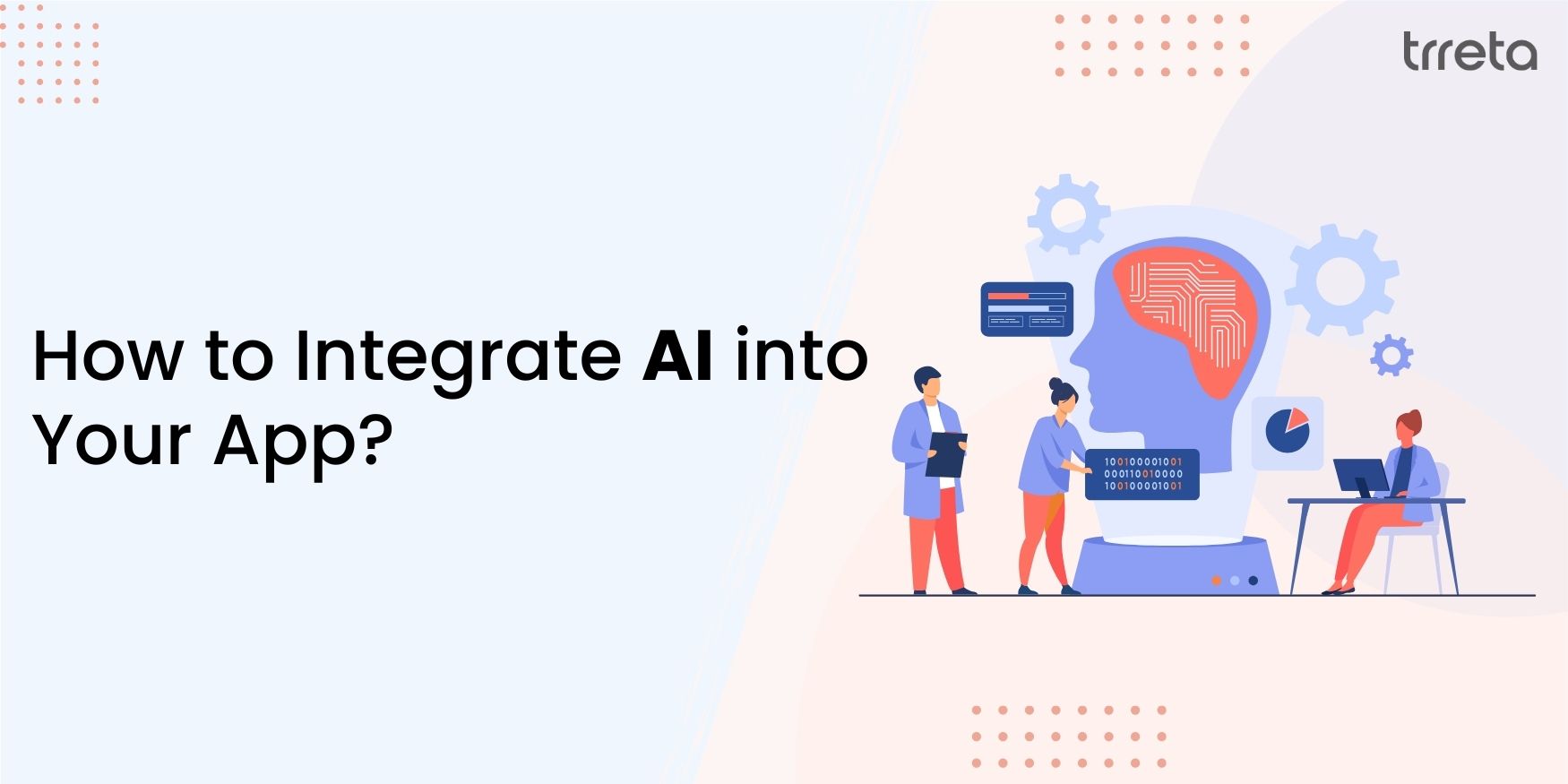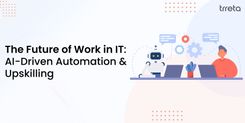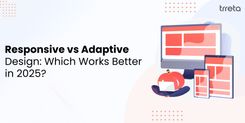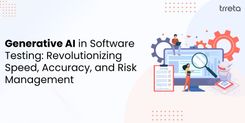On a recent episode of the "Decoder" podcast, GitHub CEO Thomas Dohmke said -
"I think in 2025, it's totally fair game to say you should reflect on your AI usage, and you should reflect what did you learn about AI, did you use GitHub Copilot or Microsoft Copilot, Teams Copilot to summarize a meeting, and if not why not?"
There was a time when businesses saw integrating AI into business as experimental, but today, even big giants are doing artificial intelligence integration by weaving it directly into their products.
According to the Wall Street Journal, companies integrating AI into apps and workflows see efficiency improvements of up to 50% in system integration tasks.
So now the real question for decision-makers is no longer if they should bring AI into their apps, but how to do it in a way that’s strategic, scalable, and aligned with business goals.
In this guide, we’ll break down what is the ai application, how to integrate AI into an app by setting the right foundation, tool choices, step-by-step guide, and how companies like yours can avoid pitfalls while unlocking the true value of AI in applications.
So let’s get started without any further delays!
Start with Setting the Right Foundation to Use AI in Apps
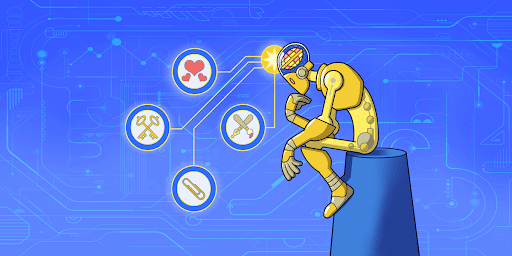
Before going deep into APIs or models, leaders need to step back and ask a simple question: What role should AI play in the app for the end-user?
If the goal is customer support, conversational AI or chatbots may be the right fit. If it’s personalization, you’ll be looking at recommendation engines. If it’s workflow automation, AI can streamline repetitive tasks like invoice processing or predictive alerts.
So setting the right foundation makes all the difference because at the technical layer, you can’t just “plug AI in.” To make artificial intelligence integration sustainable, enterprises adopt an MLOps and DevOps convergence strategy.
How to Choose Your AI Toolset? API, Framework, or Full Platform?
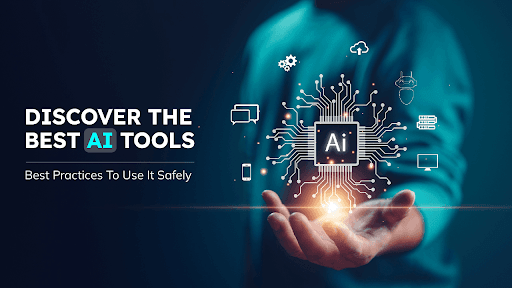
Here’s where many businesses get stuck after they have decided to integrate an artificial intelligence app - do you buy, borrow, or build?
Consider below points mentioned below as a guiding path to make the right choices -
-
API-first approach:
If speed is your main priority, APIs like OpenAI or Google Cloud AI are a fast way to embed features like natural language processing or image recognition.
Imagine a retailer adding an AI-powered search to their mobile app within weeks. With APIs, you can make that possible.
-
Frameworks and SDKs:
If you want more control, frameworks (like TensorFlow, PyTorch, or even Firebase AI Logic) provide flexibility to fine-tune models.
A fintech firm building fraud detection might prefer this route since it allows them to tailor AI closely to their risk data.
-
Full AI platforms:
Finally, platforms or LLM agents (using approaches like the Model Context Protocol) go further, letting your businesses orchestrate AI across apps, databases, and workflows.
For enterprises aiming for multi-department AI integration - say, customer service, HR, and finance - platforms are more future-proof.
All of these choices come down to your business maturity stage. So let’s say if you are a startup, you can start with often start with APIs, but if you have an enterprise aiming for deep AI integration, it’s a better idea to invest in platforms.
Step-by-Step Guide on How to Integrate AI into an App
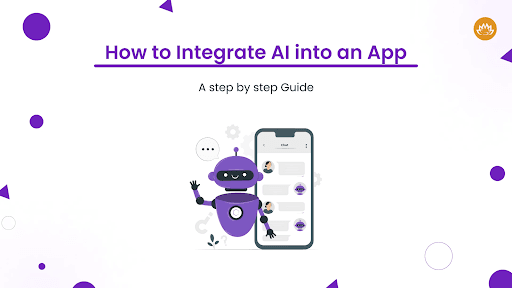
Once you have decided to have AI in your application, here’s how integration takes place in real life -
1. Define objectives and use cases -
Every strong AI initiative starts with a clear “why.” Instead of saying, “We need AI,” ask, “What problem do we want AI to solve?”
For example, a healthcare app might need to triage patient queries through a conversational bot. Or for a retail platform, it could be recommending products based on browsing history.
By framing AI around a business problem, you avoid wasting resources on flashy but irrelevant features.
2. Choose the right model -
Once objectives are set, the next phase is how to achieve them. Pre-trained models are quick wins, great for startups that need immediate results like image tagging or natural language queries.
While fine-tuned models strike a balance, they let you adapt to your unique dataset (say, a bank refining fraud detection on its own customer records).
And lastly, custom models may seem costlier, but they provide you with competitive advantages for enterprises with specialized needs.
3. Set up Integration with Guardrails -
This is where development work begins. Teams typically integrate AI through SDKs or APIs.
But smart leaders know the devil is in the details, like error handling, fallback logic, and data validation.
For example, if your AI chatbot API times out, does the app gracefully hand over to a human agent? These nuances separate polished applications from brittle ones.
4. Prototype, test, and iterate -
The first version of AI in your app won’t be perfect, and that’s fine. Businesses that succeed treat early AI features as prototypes. They test them in controlled user groups, gather real feedback, and refine continuously.
A financial dashboard, for instance, may start with basic predictive charts and evolve into more complex forecasting as trust builds.
5. Scale with DevOps and MLOps pipelines -
The last step is turning a working prototype into a production-ready engine. By embedding AI into continuous integration/continuous delivery (CI/CD) workflows, updates and retraining happen seamlessly.
To give you an example, we can say - a logistics company might scale from a single AI route optimization tool to a full predictive supply chain platform - without reengineering the entire stack.
In short: define, choose, integrate, test, scale, and treat it as a lifecycle. Each stage builds confidence and prepares the system for long-term AI success.
Leverage These Tools & Techniques to Ease AI Integration

Now, at this point, the question becomes less about “how to integrate AI into an app?” and more about “how do we manage it without breaking the system?”
Well, AI integration is all about tools and governance.
If you are looking for personalization with minimal engineering lift, Firebase AI Logic is the best option to go with. However, if you are an enterprise, you can leverage open-source models orchestrated with MCP (Model Context Protocol) to avoid vendor lock-in.
But let us tell you that tools alone aren’t enough. It’s highly recommended to have frameworks like a combination of DevSecOps with MLOps, as they not only ensure that AI runs well, but also that it runs responsibly.
Moreover, security, compliance, and audit trails must be as much a part of your AI pipeline as model accuracy.
How to Overcome Common Integration Pitfalls While Doing Artificial Intelligence Integration?
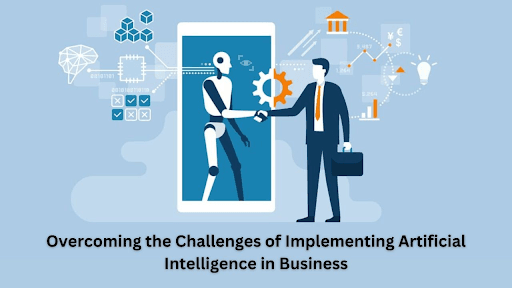
Let us tell you that - even seasoned companies stumble when it comes to integrating AI into business. Here are some of them -
-
API rate limits:
One of the most common hurdles businesses face in artificial intelligence integration is the underestimation of how quickly user growth can overwhelm AI APIs.
Without planning, that virtual assistant you built may slow down at peak times, frustrating users.
-
Hallucinations and inaccuracies:
AI models sometimes produce confident but wrong answers. Without human oversight or fallback rules, this may lead to further challenges.
-
Compliance and risk management:
Lastly, in sectors like healthcare or banking, mishandled data can result in heavy penalties. That’s why businesses integrate monitoring dashboards and audit logs alongside AI outputs.
Remember - these pitfalls are not a sign for you to not use AI. They just simply mean that you use AI with the same discipline you’d apply to financial controls or cybersecurity.
How Trreta Can Help You Integrate AI into Your App?
Today, smart leaders use AI to solve business problems while setting up for tomorrow’s scale.
At Trreta Techlabs, we take a strategy-first approach to AI integration. That means aligning AI with user journeys, building secure and scalable architecture, and ensuring governance so that AI features can grow with your business.
So, whether you’re adding AI in apps for personalization, automation, or analytics, Trreta helps you do it in a way that creates long-term value.
👉 Contact us today to map out your AI integration roadmap.
